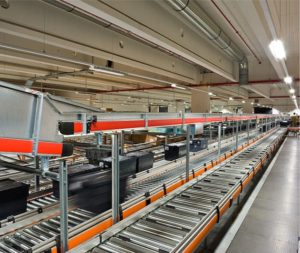
Electric cylinders lower cost of conveying equipment
Conveying equipment manufacturers know that fast and efficient systems are critical to manufacturing success. Conveying system buyers are demanding better positioning accuracy, energy efficiency, and lower cost of ownership to ensure their ongoing success. Plus, some are eliminating compressed air systems and asking for electric linear actuators, including electric cylinders, instead of pneumatic solutions. Since they often produce several product models in the same plant, buyers need actuators that are easily programmable to several positioning set-ups.
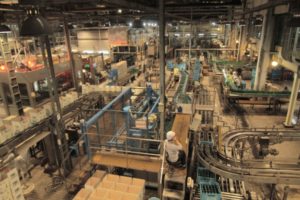
Electric linear actuators versus pneumatic: Total cost of ownership
Saving money is on everyone’s mind these days, especially when it comes to industrial automation. Automation is recognized as an important way to boost quality and productivity; however, the cost of adding automated systems can be daunting.
To keep costs in line, machine designers are often tasked with finding money-saving solutions. This doesn’t mean using the cheapest components, though. If a component has a low purchase price but is expensive to operate and maintain, it’s not a bargain. Smart engineers look at the total cost of ownership (TCO) of components they’re considering, including linear actuators.
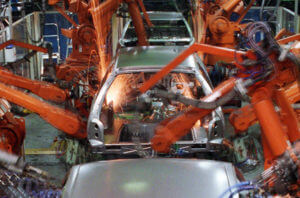
Servo welding actuators improve weld quality, reduce costs
Reducing manufacturing costs and improving product quality are driving forces in automotive manufacturing. Automation plays a key role in achieving these goals, and robots, especially welding robots, are an important part of the automation picture.
Resistance spot welding is used extensively in auto frame and body construction, and robotic welding lines are familiar sights in many plants. This type of welding requires speed, exact placement of welds, and precise pressure on weld tips. Most resistance spot welding robots rely on servo welding actuators to control cycle timing and pressure on weld tips.
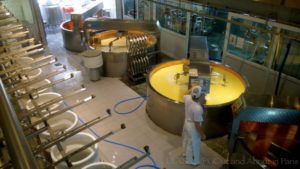
Hygienic, IP69K electric rod actuator meets food processing needs
Food processing is a tough environment for most automation equipment. There may be washdowns with high-pressure, high-temperature water. Caustic cleaning agents might be used. There also may be strict food safety standards to adhere to, like the USDA’s regulations for the meat, poultry and dairy industries. As automation components, all linear actuators, like electric rod actuators, need to stand up to the rigors of the food processing environment.
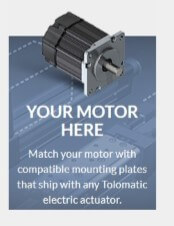
Electric linear actuators and motors. Getting the right fit.
An electric linear actuator can outperform a pneumatic model with superior control of speed, position, and force as well as provide better accuracy and repeatability. But that superior performance comes with complexity. Pneumatic cylinders commonly are simple, easy-to-understand components, while electric linear actuators are systems comprised of a motor, controller, cables, and actuator. Plus attaching a motor to an actuator usually requires some kind of adaptor or housing.

Electric linear actuators deliver precise positioning for aerospace welding
Precision is integral to the aerospace and defense industries. Even a seemingly insignificant element of a device may be mission-critical, requiring the tightest manufacturing tolerances. That’s why when a rocket manufacturer contacted us about electric linear actuators that could hold their fuselage components in place for welding, we knew precise positioning would be a requirement.
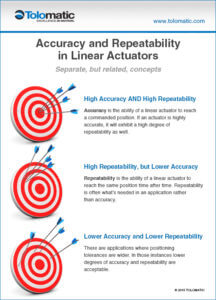
[INFOGRAPHIC] Accuracy and repeatability in linear actuators
Machine builders frequently ask us, “How accurate is this actuator?” The answer is more than a number found in the product’s specifications. The real-world answer is much more complex.
In the real world of manufacturing, a greater degree of accuracy can come with a higher price tag. Sometimes you just need repeatability in your application, and that can be less costly. We urge you to thoroughly study the requirements and parameters of each application before selecting an actuator. Understanding the specific needs of each application will help you avoid excess costs and design a system with the best overall value.
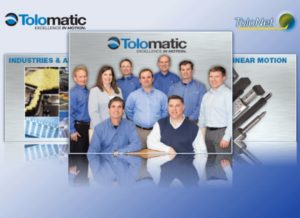
Electric linear actuator sizing software makes selection easier
Selecting the right electric linear actuator for the task doesn’t have to be complicated. Our sizing software gets you to the right fit faster. The process begins when you enter your project parameters in our web interface at sizeit.tolomatic.com.The software asks the right questions and walks you through the specifying process step by step so you get the electric rod actuator or rodless electromechanical actuator that suits your application.
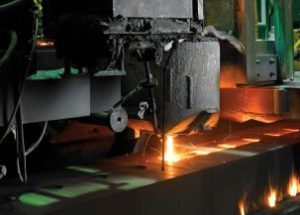
Electric linear actuator selection tips: Consider the environment
When you’re faced with electric linear actuator selection, one of the early considerations has to be the industrial environment in which it will operate. Will there be dust? How much dust and what kind? Will there be moisture? Direct spray? High temperatures and pressures? Corrosive substances?
These factors affect the performance of an electric linear actuator and may point to the best type for an application.
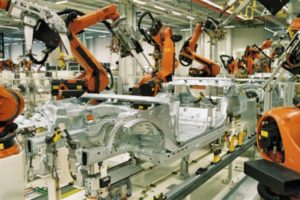
Better welds with electric linear actuators for resistance welding robots
U.S. and European car manufacturers have long been convinced of the benefits of automation in their production facilities. Spot welding robots are common in their body production lines.
Automation and robotics offer advantages in cost savings and quality, but plants in India, China, and Southeast Asia have been slow to get on the bandwagon. Perhaps some plant managers see these production processes as too expensive or difficult to implement. Whatever the reason, that situation may be changing according to a Frost & Sullivan study described in an article on The Fabricator.com
